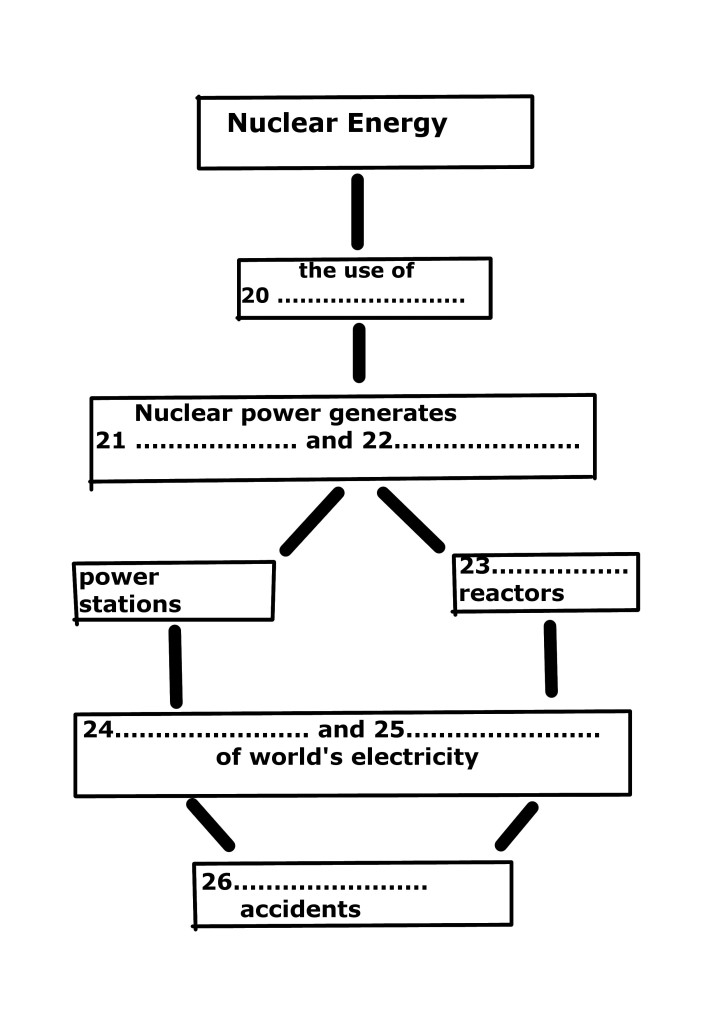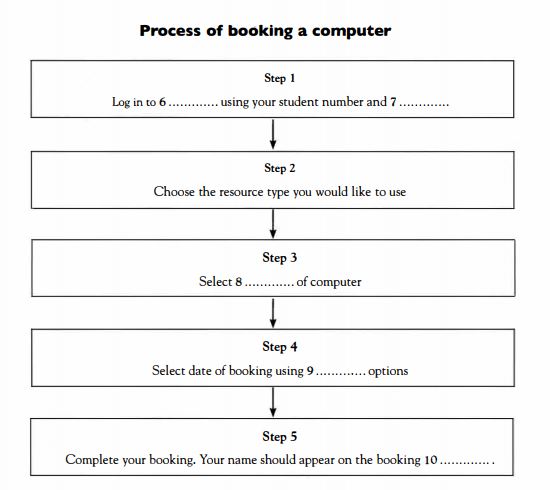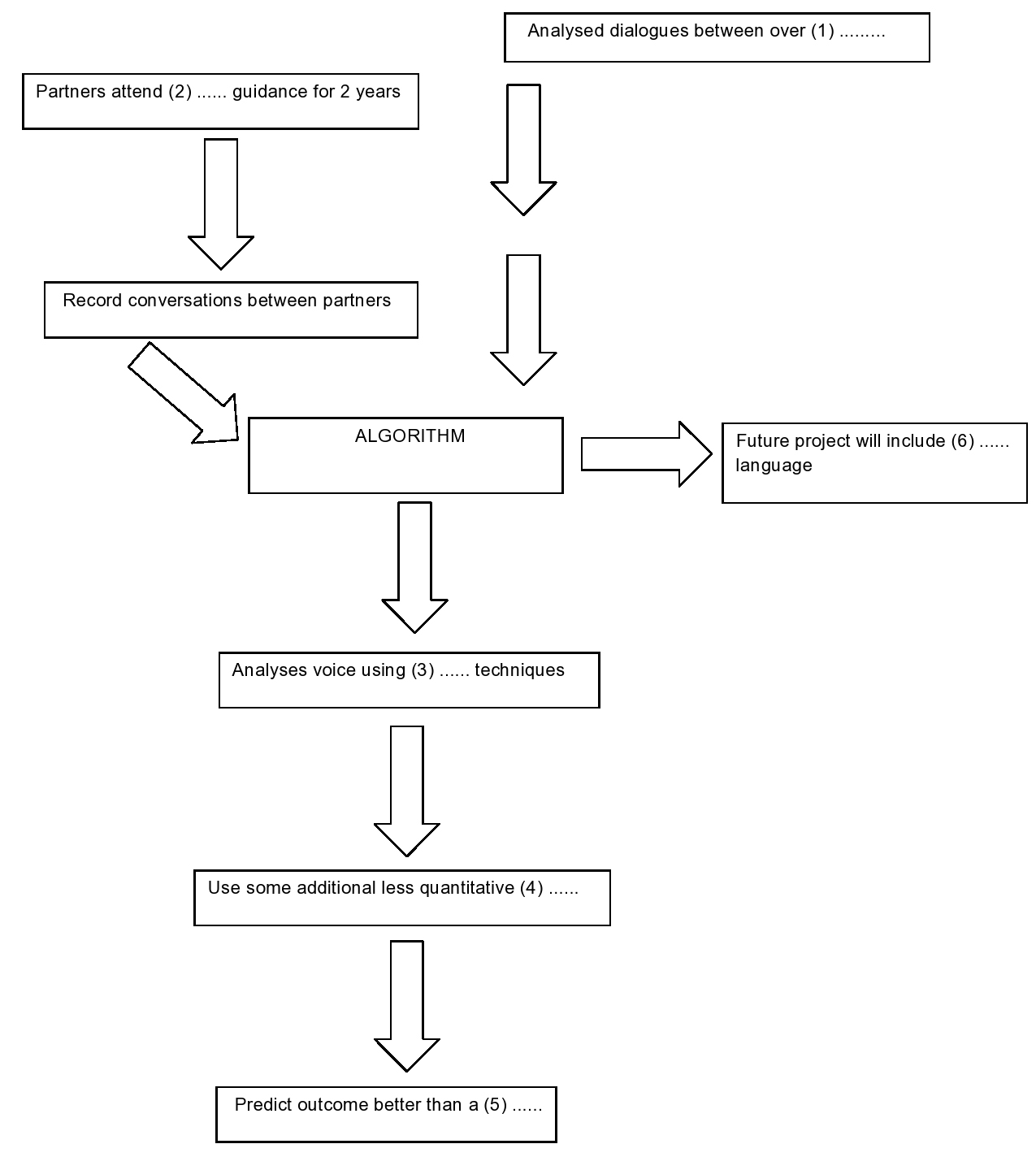The listening section in IELTS is the same for students appearing for academic tests or general tests. Students are tested with the same set of questions and the same set of audio clips. The scoring pattern and marking is also the same. The listening section is one of the relatively easier sections in the IELTS. It has 4 sections with 40 questions. You can also use all uppercase or lowercase to answer, except for in special word cases.

There are different types of questions that can appear in the test. Which question will appear in which test is unpredictable making it important to study each possible question format in detail. This article will share some simple and effective tips to help you solve the flowchart type questions. To begin with here is an example from one of the tests.
Here are some tips to help you solve flowchart type questions
1. Numbering the Flowcharts
Some flowcharts will have a straightforward flow but some will not. Here are examples of two different flowcharts. The trick here is to understand the relationship and effect information has on the flow. In the second flowchart example although the flow seems to be in a certain sequence because of the arrows, the numbering of the clues shows you another sequence. We suggest you look at the numbering because that is the sequence the answers will follow in the audio clip. Before you begin, take a look at both to avoid confusion.


2. Understand the Grammar
Take a look at the grammar of the sentences. If there is an article before the gap like ‘a’, the answer will most likely be a noun or noun phrase. In the above example, the sentence ‘nuclear power generates….’ Is bound to have a unit of measurement or the end product of the reaction as an answer since nuclear power generates either one.
3. Mapping the answers
There are two types of possible tasks, one with options to choose from and the other without. When you are faced with a question with choices, take minute to map possible answers to the questions using common sense. This will take away the pressure of discovering the answers and you will listen to the audio only to confirm your answers.
4. Gauging the idea
Try to gauge or understand the idea as whole behind the flowchart before you start answering questions. Making a conscious effort and putting in a minute to get the idea can dramatically improve your cognitive abilities while listening to the audio clip.
5. Go with the flow
This one is obvious yet an easily forgotten tip. The answers will come sequentially. It is important to know at what stage the speaker is to be able to map it effectively to the flow chart since an answer will appear every 30 to 40 seconds.
6. Highlight the keywords
Underline keywords to look out for in the clip. For example, in the above diagram, there is a reference related to the world’s electricity. The answer clearly requires information which defines the relationship between nuclear power and total world electricity produced. Underlining the keywords and understanding the subject will help you pick up the clue the moment you hear highlighted words.
7. Jot down the important points
Write your answers on a sheet of paper before transferring it onto the final sheet. This step is essential to check if your answers are making sense in the sequence and also to make sure that you are adhering to the word count. Since the flowchart type questions are short and crisp you have to try and ignore additional or unnecessary information from the audio clip.
8. Do Spell check
The accents used may vary. The IELTS is an international test but the main accents you will come across are British and American. Practice familiarizing yourself with the help of BBC radio. IELTS accepts British as well as American English spelling. Make sure to check your spellings as it will lead to a deduction if wrong.
9. Avoid memorising
Don’t try to memorise or understand everything while listening. The test is built to understand your comprehending abilities, not memory. Even if you do not understand the topic at all, you only need to hear the right words to be able to answer. Sometimes the speaker may present an idea or talk on a topic you don’t agree with or relate to. In such cases, it is important to maintain a neutral stand point and keep listening.
The listening section in IELTS is one of the easier sections and can help you raise your average exponentially if you practice enough and keep simple tips in mind.
Happy practicing!








liked it!